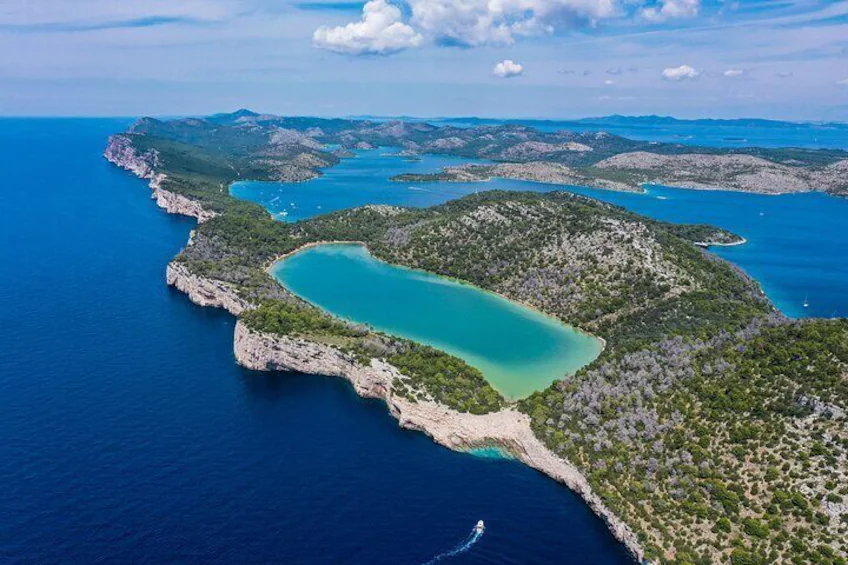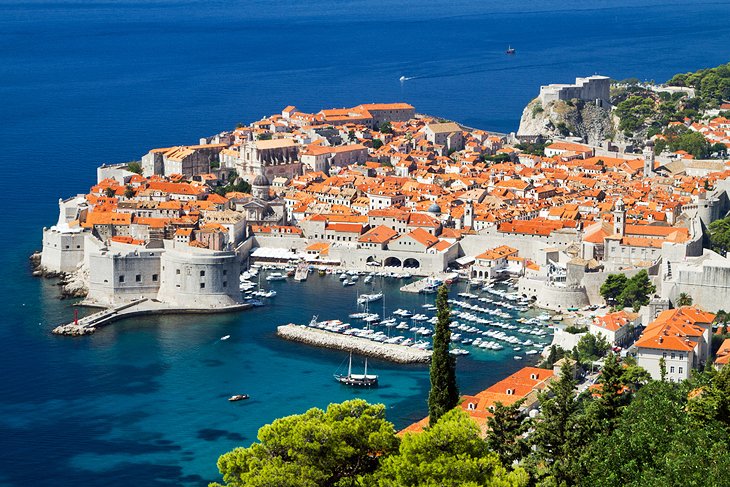Marjan Park
.jpeg)
On the peninsula of Split, Croatia's second-biggest city, is the hill known as Marjan. It is a unique site, entirely encircled by the city and the sea and covered in a dense Mediterranean pine forest. Originally utilized as a park by the locals as early as the third century, it is now a popular weekend getaway spot and a metropolitan recreational hub. Surrounded by a picturesque forest, it is also the location of a number of beaches, jogging routes, tennis courts, and the city zoo. The Institute of Oceanography and Fisheries (Institut za oceanografiju i ribarstvo, IZOR) is located at the tip of the peninsula.
With a height of 178 meters, Marjan provides a view of the entire city, the neighboring islands, and the mountains of Kozjak and Mosor.Bene, Kašjuni, and Obojena beaches are situated at the base of Marjan Hill.
At a height of 122 meters (400 feet), the maximum temperature recorded at the local weather station since records began in 1948 was 38.6 °C (101.5 °F) on July 5, 1950.On January 23, 1963, the lowest recorded temperature was -9.0 °C (15.8 °F).
Marjan Park is well-known for both the sports it offers visitors and its natural beauty. Along with the various park excursions, the panoramic vista is one of the park's greatest features. In and around the park, there are also cafes, eateries, beaches, and places of worship.
This green forest oasis, which is west of Split's old town area near Riva Promenade, is well-known as the "lungs of the city" and is a popular destination for many tourists, particularly adventurers. Hiking, motorcycling, swimming, and rock climbing are all possible amid the abundance of nature, which attracts a lot of tourists. In addition to this, other tourist destinations include the Church of St. Nicholas, Bethlehem, the first Marjan viewpoint Vidilica, and equally fascinating beaches like Bene and Kasjuni at the base of the hill. It serves as the city's recreational center and a popular weekend getaway destination because it accommodates all of the tourists' preferences.Some of Split's nicest beaches can be found on this verdant, wooded peninsula, which is located just north of Old Town. My favorite is Kasjuni Beach, which is ideal for a lively day at Joe's Beach Lounge or a peaceful morning swim.In addition, Marjan Park features peaceful trails that meander through the thick Mediterranean pine forest. Beautiful views of neighboring islands and the glistening Adriatic Sea may be seen from the shore.
Marjan Forest Park: How to Get ThereBy Bus: From Riva, take bus 12 and disembark at the final stop, right by Bene Beach.
-By Foot: By ascending the stairs to Vidilica fr, you may easily reach Marjan from the city.Some of Split's top attractions are found at Marjan Park, including our favorite beach and the best city views. It features churches, a cemetery, what is likely Split's best museum, and numerous paths that offer the city's most accessible natural beauty. The best months to visit Split for sightseeing are April, May, and October. It should be comfortable, not too hot, and less crowded than during the busiest time of year. For a more relaxed exploration of attractions such as Diocletian's Palace, Marjan Hill, and the Old City, early spring and late autumn are ideal.In addition to its many attractions, the park provides breathtaking views of Split and the ocean. There are some possibilities for food and beverages. At least one to three hours should be allotted here. Don't forget to pack drink and sunscreen.
By Admin
19 May 2025

.jpeg)



